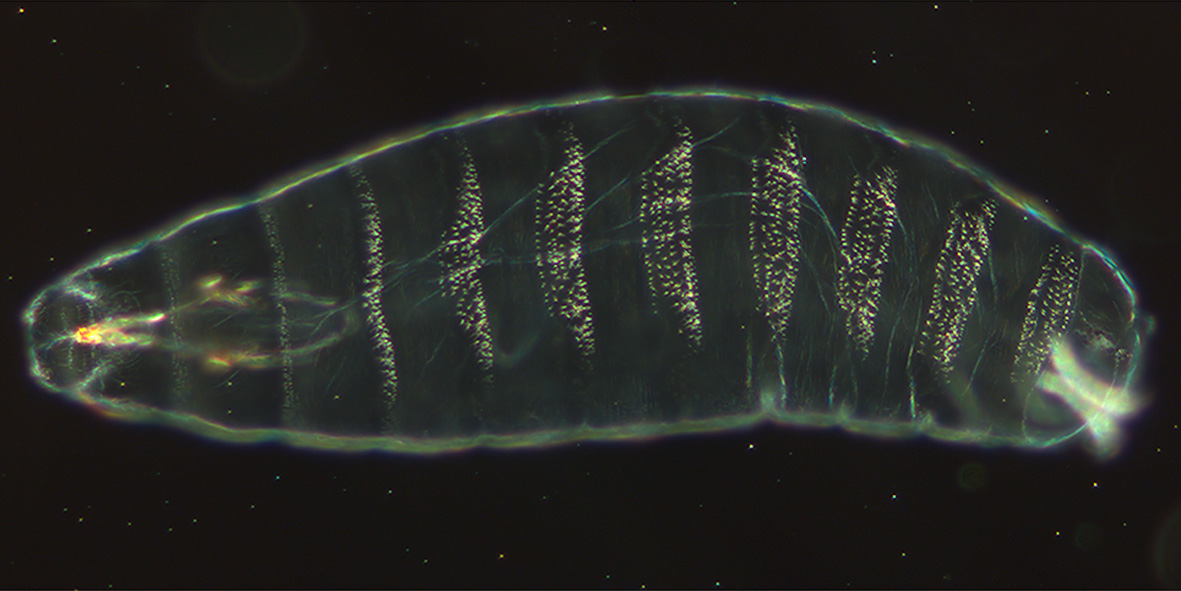Faint Little Ball on:
[Wikipedia]
[Google]
[Amazon]
Faint little ball (flb) is a ''

Drosophila
''Drosophila'' () is a genus of flies, belonging to the family Drosophilidae, whose members are often called "small fruit flies" or (less frequently) pomace flies, vinegar flies, or wine flies, a reference to the characteristic of many species ...
'' gene that encodes the ''Drosophila'' epidermal growth factor receptor
The epidermal growth factor receptor (EGFR; ErbB-1; HER1 in humans) is a transmembrane protein that is a receptor for members of the epidermal growth factor family (EGF family) of extracellular protein ligands.
The epidermal growth factor recept ...
(DER) homolog. The gene is also called ''torpedo'' and ''Ellipse''. The gene is located at 3-26 of the ''Drosophila melanogaster
''Drosophila melanogaster'' is a species of fly (the taxonomic order Diptera) in the family Drosophilidae. The species is often referred to as the fruit fly or lesser fruit fly, or less commonly the "vinegar fly" or "pomace fly". Starting with Ch ...
'' genome. It is named ''faint little ball'' because when the gene is mutated the embryo forms a ball of dorsal hypoderm. ''flb'' is necessary for several processes to occur during embryonic development, specifically in central nervous system development. It is expressed as quickly as 4 hours after fertilization of the egg. The peak of expression of the ''flb'' gene is between 4–8 hours into development. In all processes that are facilitated by ''flb'' the same signal transduction pathway
Signal transduction is the process by which a chemical or physical signal is transmitted through a cell as a biochemical cascade, series of molecular events, most commonly protein phosphorylation catalyzed by protein kinases, which ultimately re ...
is used. ''Drosophila'' EGF receptor is involved in the development of embryos as well as larvae/pupae's wings, eyes, legs and ovaries.
Interactions
Whether looking at development in embryos or larvae/pupae, DER relies on several ligands to carry out its function. These are calledSPITZ
Spitz (derived from the German word ''spitz'' 'pointed') is a type of domestic dog characterized by long, thick, and often white fur, and pointed ears and muzzles. The tail often curls over the dog's back or droops. While all of the breeds rese ...
, ARGOS and Gurken. The efficiency of DER corresponds with the sum of these three ligands
In coordination chemistry, a ligand is an ion or molecule (functional group) that binds to a central metal atom to form a coordination complex. The bonding with the metal generally involves formal donation of one or more of the ligand's electro ...
. As of yet the exact purpose of these ligands in the pathway of DER is unknown, but when expression of these ligands is altered from normal, aberrant phenotypes of the embryos can be observed. When DER is over utilized in the cell because of increases in ligand, phenotypic abnormalities can be visualized such as hyperplasia
Hyperplasia (from ancient Greek ὑπέρ ''huper'' 'over' + πλάσις ''plasis'' 'formation'), or hypergenesis, is an enlargement of an organ or tissue caused by an increase in the amount of organic tissue that results from cell proliferati ...
of the head midline structures. The ''flb'' gene also has interactions with the proteins Rhomboid
Traditionally, in two-dimensional geometry, a rhomboid is a parallelogram in which adjacent sides are of unequal lengths and angles are non-right angled.
A parallelogram with sides of equal length (equilateral) is a rhombus but not a rhomboid.
...
and Star. Rhomboid is a protease that cleaves ligands such as Spitz so that they can come into contact with receptors such as DER and begin activate a signal transduction pathway.

Function
Expression of the ''flb'' gene can be seen as early as four hours into the development of ''Drosophila melanogaster''. At four hours the gene is facilitating the retraction of thegerm band
The primitive streak is a structure that forms in the early embryo in amniotes. In amphibians the equivalent structure is the blastopore. During early embryonic development, the embryonic disc becomes oval shaped, and then pear-shaped with the br ...
as well as structuring the beginnings of the CNS. At six hours the gene is used to differentiate epidermal cells to secrete denticle belts which begin segmentation of the larva. At nine hours the gene is used for the differentiation of midline glial cells. When this gene is mutated or any of its interactions are altered phenotypes such as fused commissures can be seen as a result of improper segregation.
Mutation
When the ''flb'' gene is mutated, several phenotypic abnormalities during development can be viewed. The first is that the embryo will form a ball of dorsal hypoderm. This is because ''flb'' is responsible for the formation of the ventral cuticle. Without the complete formation of the ventral cuticle only dorsal structures will be present. Since ''flb'' plays a role in the formation of the CNS and the eye, head structures will be underdeveloped or not present at all. Another function of the gene is to retract the germ band. This will not occur if the ''flb'' is mutated. There are other hypomorphic alleles that also contribute to the retraction of the germ-band, which allow for a spectrum of severity in the phenotype of embryos but they will not recover the Wild Type phenotype completely. This gene is necessary for the development of embryos and if it is not expressed in the appropriate way, it is lethal to the embryo.References
{{reflist Drosophila melanogaster genes